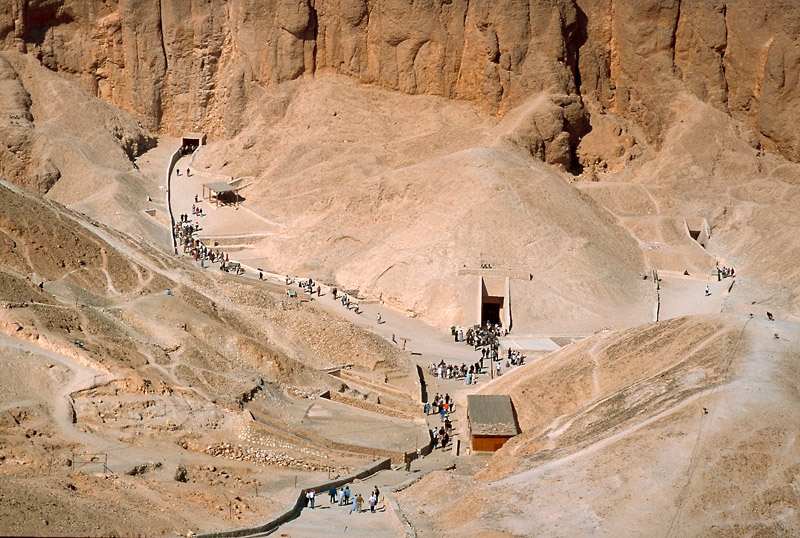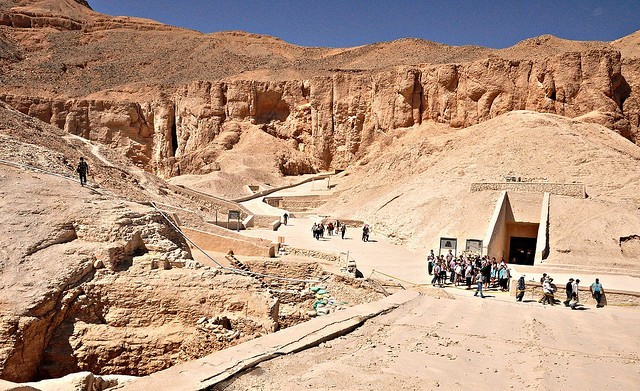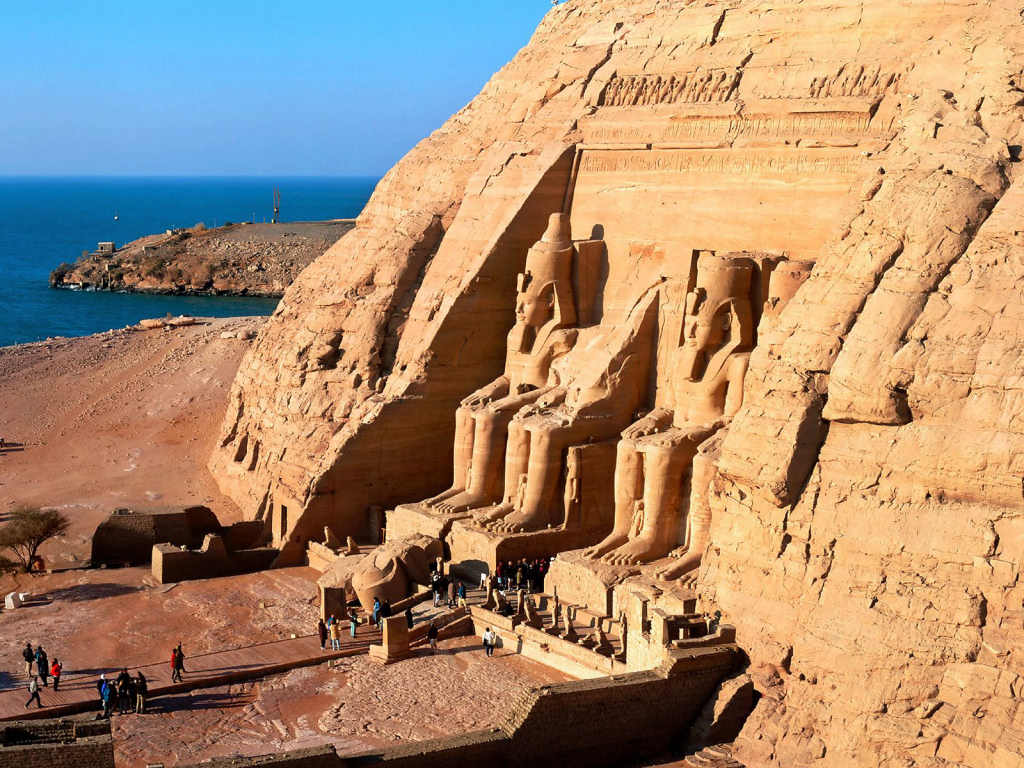The Valley of the Kings (Arabic: وادي الملوك Wādī al Mulūk), the Valley of the gates of the Kings (Arabic: وادي ابواب الملوك Wādī Abwāb al Mulūk), is a valley in Egypt where, for a period of nearly 500 years from the 16th to 11th century BC, tombs were constructed for the Pharaohs and powerful nobles of the New Kingdom (the Eighteenth to the Twentieth Dynasties of Ancient Egypt). The valley stands on the west bank of the Nile, opposite Thebes (modern Luxor), within the heart of the Theban Necropolis. The wadi consists of two valleys, East Valley (where the majority of the royal tombs are situated) and West Valley.
With the 2005 discovery of a new chamber (KV63), and the 2008 discovery of two further tomb entrances, the valley is known to contain 63 tombs and chambers (ranging in size from KV54, a simple pit, to KV5, a complex tomb with over 120 chambers). It was the principal burial place of the major royal figures of the Egyptian New Kingdom, as well as a number of privileged nobles. The royal tombs are decorated with scenes from Egyptian mythology and give clues to the beliefs and funerary rituals of the period. Almost all of the tombs seem to have been opened and robbed in antiquity, but they still give an idea of the opulence and power of the Pharaohs. This area has been a focus of archaeological and egyptological exploration since the end of the eighteenth century, and its tombs and burials continue to stimulate research and interest. In modern times the valley has become famous for the discovery of the tomb of Tutankhamun (with its rumours of the Curse of the Pharaohs), and is one of the most famous archaeological sites in the world. In 1979, it became a World Heritage Site, along with the rest of the Theban Necropolis. Exploration, excavation and conservation continues in the valley, and a new tourist centre has recently been opened.
The types of soil where the Valley of the Kings is located are an alternating sandwich of dense limestone and other sedimentary rock (which form the cliffs in the valley and the nearby Deir el-Bahri) and soft layers of marl. The sedimentary rock was originally deposited between 35–56 million years ago during a time when the precursor to the Mediterranean Sea covered an area that extended much further inland than today. During the Pleistocene the valley was carved out of the plateau by steady rains. There is currently little year-round rain in this part of Egypt, but there are occasional flash floods that hit the valley, dumping tons of debris into the open tombs.
The quality of the rock in the Valley is inconsistent, ranging from finely grained to coarse stone, the latter with the potential to be structurally unsound. The occasional layer of shale also caused construction and conservation difficulties, as this rock expands in the presence of water, forcing apart the stone surrounding it. It is thought that some tombs were altered in shape and size depending on the types of rock the builders encountered.
Builders took advantage of available geological features when constructing the tombs. Some tombs were quarried out of existing limestone clefts, others behind slopes of scree, or were at the edge of rock spurs created by ancient flood channels.
The problems of tomb construction can be seen with tombs of Ramesses III and his father Setnakhte. Setnakhte started to excavate KV11 but broke into the tomb of Amenmesse, so construction was abandoned and he instead usurped the tomb of Twosret, KV14. When looking for a tomb, Ramesses III extended the part-excavated tomb started by his father. The tomb of Ramesses II returned to an early style, with a bent axis, probably due to the quality of the rock being excavated (following the Esna shale).
Between 1998 and 2002 the Amarna Royal Tombs Project investigated the valley floor using ground-penetrating radar and found that, below the modern surface, the Valley's cliffs descend beneath the scree in a series of abrupt, natural "shelves", arranged one below the other, descending several metres down to the bedrock in the valley floor.












